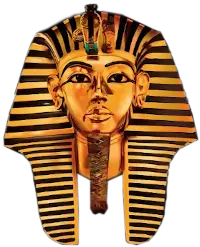
APPENDIX
THE PURPOSE of this appendix is to present a brief analysis and summary of the arguments, conclusions and inferences which relate to the subject matter which has already been treated. It is also hoped that it will serve the secondary purpose of simplification.
ARGUMENT I. Greek philosophy was stolen Egyptian philosophy.
Because history tells us that (i) The teachings of the Egyptian Mystery System travelled from Egypt to the island Samos, and from Samos to Croton and Elea in Italy, and lastly from Italy to Athens in Greece through the medium of Pythagoras and the Eleatic and late Ionic philosophers. Accordingly, Egypt was the true source of the Mystery teachings and therefore any claim to such origin by the ancient Greeks is not only erroneous but must have been based upon dishonest motives.
(ii) History also represents the early life and education of Greek philosophers as a blank and their chronology as a matter of speculation. Consequently it has given the world the opinion that the Greek philosophers, with the exception of the three Athenians, might never have existed and might never have taught the doctrines alleged to them. In other words History represents the Pre-Socratic philosophers as questionable in existence and under those circumstances they could neither produce philosophy nor claim its authorship, except by questionable and dishonest methods.
(iii) The compilation of Greek philosophy appears to have been the idea of Aristotle, but the work of the alumni of his school. The movement was unauthorized by the Greek Government which always hated and persecuted philosophy, because it was Egyptian and foreign. The organization, control and operation of the Mysteries gave the Egyptians the right of ownership to philosophy, and therefore any claims by the ancient Greeks to philosophy must be considered as illegal and dishonest.
ARGUMENT II. So-called Greek philosophy was alien to the Greeks.
Because (i) the period of Greek philosophy (Thales to Aristotle) was a period of internal wars among the city states themselves and external wars with their common enemy, the Persians. The Greeks were victims of perpetual internal strife and perpetual fear of annihilation
Topics
Greek Philospohy is Stolen Egyptian Philosophy
The Memphite Theology is the Basis of all Important Doctrines of Greek Philosophy
Greek Philosophy was Alien to the Greeks
Greek Philosophy was the offspring of the Egyptian Mystery System
The Egyptians Educated the Greeks
The Curriculum of the Egyptian Mystery System
The Pre-Socratic Philosophers and the teaching Ascribed to them
The Athenian Philosophers
1. Socrates
2. Plato
3. Aristotle